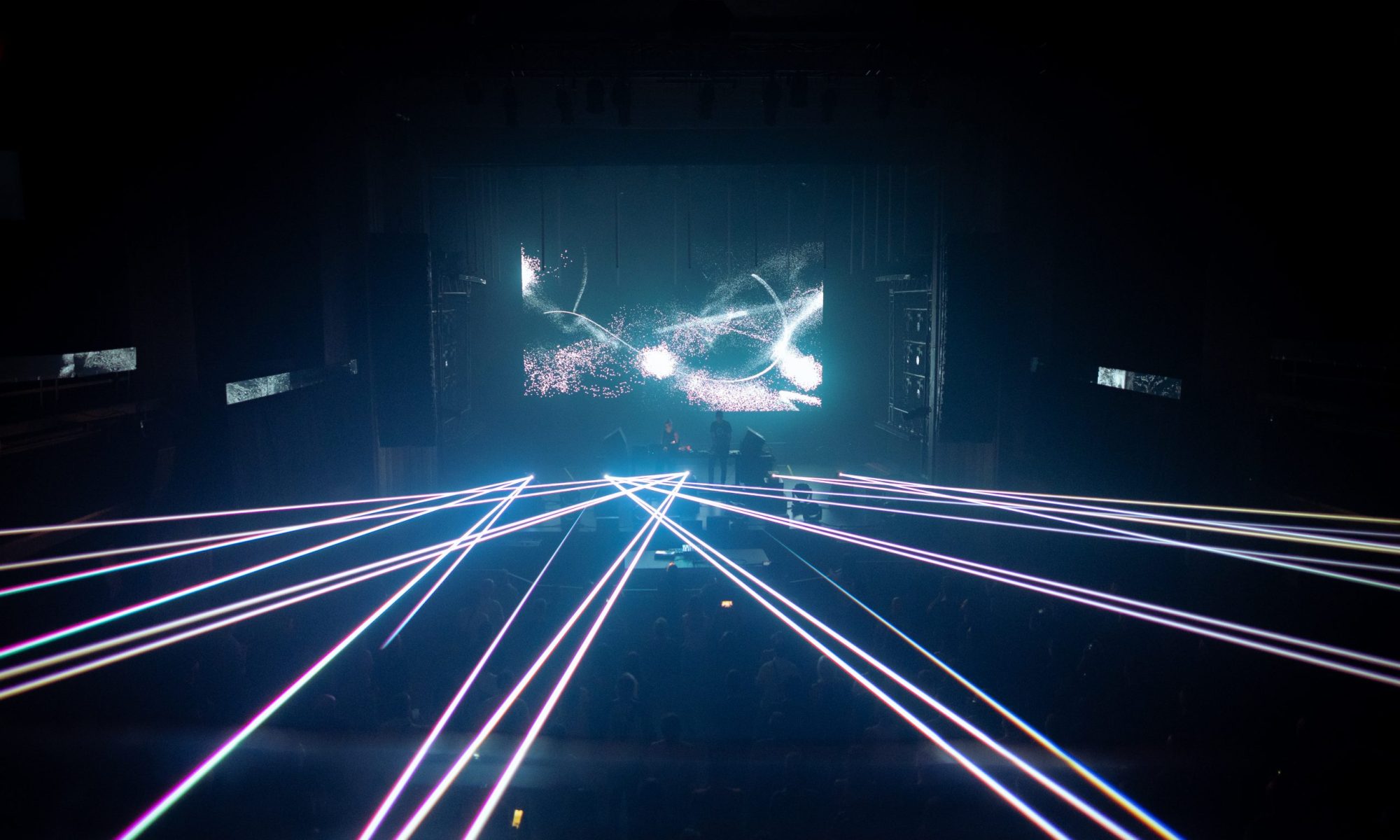from “Barton McLean, Reviewer, Computer Music Journal.”
Réseaux des arts médiatiques presents “Akousma,” EMPAC Studio 2, 10/7/11
Since its inception in 1991, Réseaux has dedicated itself to presenting and later commissioning electronic music works from Canadian and non-Canadian composers alike. Based in Montreal and amply funded by national, provincial, city, and other funding, it has garnered a unique place in the development of all forms of electronic music in Canada and internationally. It assigns the broad title “electro music” to all forms of electronic and computer music, with prominent subheadings “electroacoustic,” “concrète,” and “acousmatic.”
The EMPAC audience was treated to a preview of a much larger festival in Montreal to occur the following week. Titled “Akousma,” this sound diffusion concert consisted of an array of 20 loudspeakers configured in bottom and top rows, with a few in the middle, all surrounding and above the audience, with fewer discrete channels (at times 8, at times 6, at other times undetermined). The overall sound quality was spectacular (as we have come to expect from EMPAC), with clarity and finesse of frequency response unparalleled.
Although the stylistic mission of Réseaux is broad-based, the work of three of the four composers on this concert was rather traditionally oriented in sonic materials I would characterize as granular-based, white noise-derived, rapidly moving sound events usually divorced from traditional tempered pitch/rhythm elements, opting instead for the juxtaposition of gesture, silence, peppered with occasional sections of low key continuity. If this sounds like a general description of your average electroacoustic concert of today, you are right. Although these three composers managed to exhibit technical skill in crafting the sound event, there was rarely anything to distinguish one piece from another in this milieu of common practice style that has so permeated the scene for the past decade.
One exception to this was a powerfully executed section of “Qui-vive” by Pierre-Yves Macé, in which a quasi-microtonal gestural melodic idea was repeated over several minutes with variations, to the accompaniment of a gradually rising tension in other stratified layers, producing a grand feeling of inexorable forward motion, prompting this reviewer to the conclusion that this common practice style still has room for growth in the hands of a masterful creator.
Speaking of masterful, France Jobin’s “Valence of one” forced the audience to sit up and take notice, not because of any new wild gestural statement as we had come to expect, but rather from the sheer quietness and slow pace. The overall scheme was simplicity itself, with two main sections, the first being various derivatives of a major second chord sounding with other fleeting pitches and timbres entering and exiting unobtrusively, and the second, the same the treatment of what was basically a major triad with added sixth. This was punctuated by an occasional piano-like note pinging against the otherwise continuous montage of sound. Twenty minutes later, when this longest work of the evening quietly ended, I was startled, since I felt that I was just beginning to feel extremely comfortable and engaged in a wonderful world where time stood still. It was as if awakening from a deeply satisfying dream. How she managed to engage the audience with such simple means still escapes me, but engage she did, masterfully.

